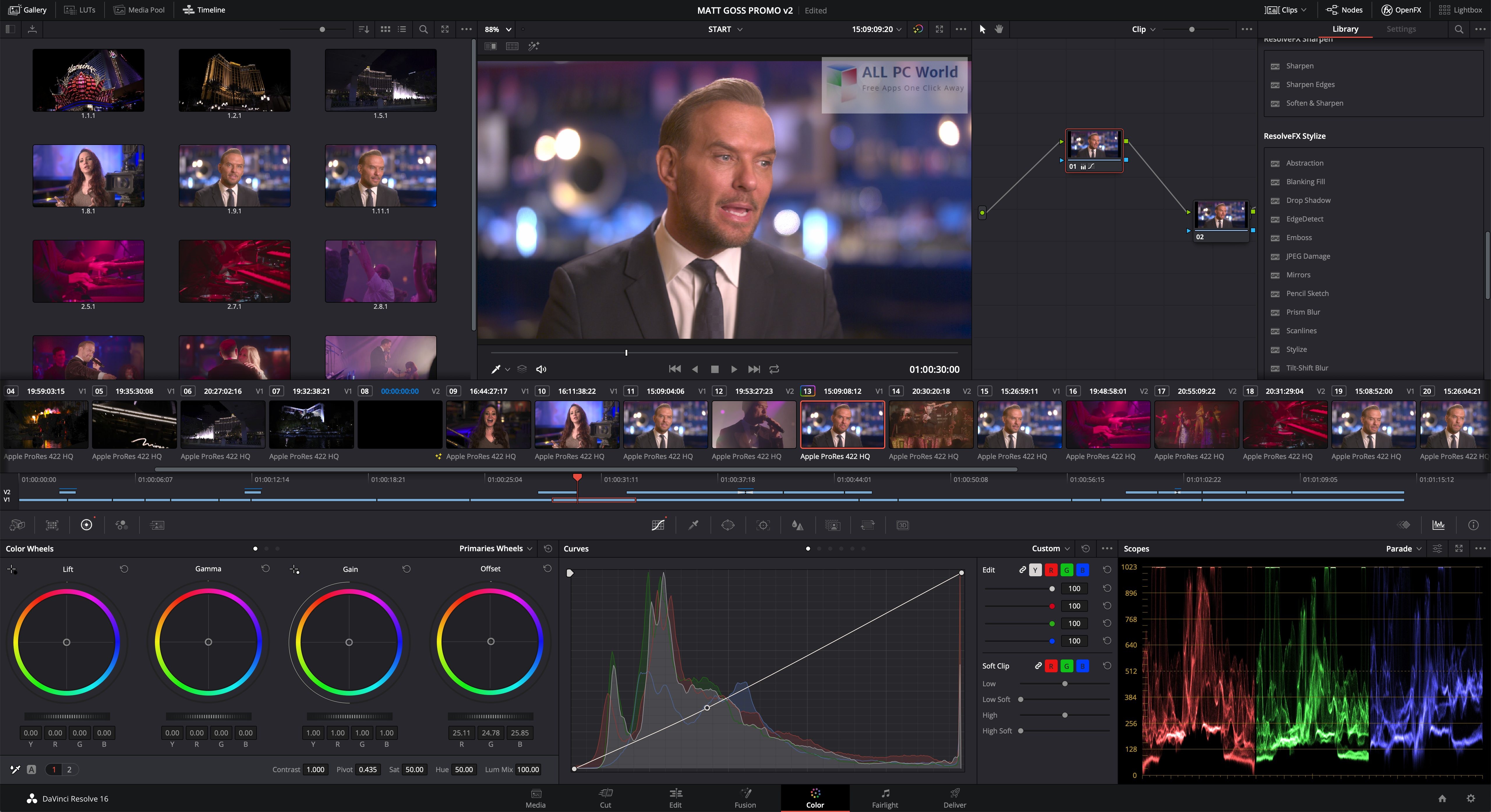

Most color grading projects will have these two nodes at a minimum.

Label each node you create with an easily recognizable name to avoid confusion over the purpose of each node.įor starters, we renamed our first node as “Primary Grade”, and the second serial node as “LUT”.

When working with multiple nodes, it’s crucial to stay organized. Processing your image in this manner allows you to build the effect you want piece by piece. In our example, we used serial nodes, meaning that each successive node would apply new changes to the output from the previous node. You can create as many nodes as you’d like for your project. For instance, you can make the changes sequential by adding nodes in serial, or layer them as needed. It’s a visual way to configure the changes you are making to each clip.īy arranging your nodes in different ways, you can change how the effects are applied. Nodes allow you to map your color grade to your footage, and make precise changes to different elements of your footage. Select a clip to color grade, and it will open automatically in a node to the right of your screen. There, you’ll see your timeline, with each clip represented by a thumbnail. Since we already took care of editing in Adobe Premiere, we’re heading straight to the Color workspace. Finally, the Fusion tab allows you to add graphics, like titles or text overlays. However, if you wanted to add footage, create timelines, or edit footage together, you’d want to navigate to the Media tab. Navigating the Workspace Tabsīy default, you’ll land in the Edit tab since we started by opening the XML file imported from Adobe Premiere. If you need to, head back to that article for step-by-step instructions on how to get your XML file imported into DaVinci. If you’ve followed the steps in our workflow for Adobe Premiere and DaVinci from last episode, you’ll already have your XML file in DaVinci. You’ll learn how to work with nodes to map your changes to different elements in your clips, apply a grade to multiple clips, and hide or emphasize specific aspects of your visuals. In this video overview, SproutVideo’s Creative Director, Nick LaClair, walks us through exactly how to color grade footage. Watch the tutorial below and keep reading for an in-depth guide to color grading using DaVinci Resolve. It’s also where you can remove blemishes, or highlight specific aspects of your image to get the exact look you want. In this episode of our How To Video series, we’re taking it a step further to show you exactly how to color grade your footage with the same software the pros use.Ĭolor grading isn’t just about making sure the reds, greens, and blues are all in balance. We’ve covered the basics of color grading in Adobe Premiere, and the details of a professional workflow using DaVinci Resolve and Adobe Premiere.


 0 kommentar(er)
0 kommentar(er)
